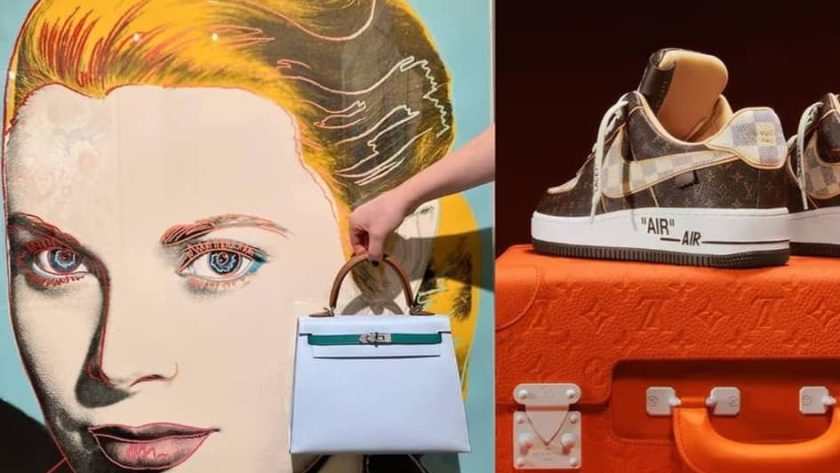As fashion and accessories have become increasingly popular in the world of auctions, many are keen to understand their growing influence. To delve into the significance and workings of these markets, FashionUnited spoke with Alice Léger, the head of the Fashion and Accessories department at Artcurial, the third largest global auction house, right after Christie’s and Sotheby’s.
Artcurial was among the first to introduce fashion and accessories to auctions. How has this segment evolved in recent years?
Alice Léger: We were indeed pioneers in organizing auctions dedicated to Hermès bags and even established a specific department for them. Although our handbag (Hermès and Chanel) and fashion departments merged in 2016, these two markets are inherently different.
In the handbag market, the prices are no longer what they used to be; they have increased significantly. The public started investing in Hermès bags about a decade ago, and speculation has only been growing since then. At the very beginning, you could buy a Constance bag for 300 to 500 euros, but now you can add another zero. The same goes for the Birkin, which follows boutique prices. The price increase is indeed attributable to speculation, but also to the considerable rise in boutique prices.
“Speculation continues to grow. At the beginning, Constance bags were sold for 300 to 500 euros, now you can add another zero.”
In the fashion market, it’s a multi-brand market where you find clothing as well as Louis Vuitton bags, for example. Fashion has become more accessible. Where previously only institutions, collectors, and regular auction-goers existed, we now have a much younger clientele, especially those who are interested in second-hand items. The emergence of second-hand selling platforms and the development of second-hand divisions within luxury houses have had a real impact on auctions. We reach a much larger clientele, both sellers and buyers.
You mentioned that the boom in online fashion sales had a positive impact on your live bid sales. Could you explain why? Do online auctions now dominate over your in-room auctions?
Alice Léger: We were already fully focused on the digital sphere before the arrival of Covid, but the pandemic significantly reinforced this channel by attracting an even wider audience. We see that people now have less difficulty buying online. They are more comfortable with online purchases and have gained more confidence in this mode of buying.
Thanks to our monthly auction frequency, we’ve succeeded in retaining this new clientele. However, we observe that in-room auctions perform particularly well. People attend these auctions in person, and their physical presence has a significant impact on the results. This may be due to a combination of factors, such as our clientele’s presence in Monaco and the opportunity for buyers to securely wear their jewellery and bags in the Principality.
“The arrival of second-hand selling platforms has had a significant impact on auctions. We’ve gained a younger clientele.”
What is the average budget of your buyers, and what is their profile?
Alice Léger: The introduction of the Fashion and Accessories segment has brought a new clientele that was less prevalent until now – the female clientele. Most auction departments are in fact traditionally frequented by a male audience. We are delighted to see that diversifying our offerings has brought new dynamics and a sense of fairness.
Spending varies significantly from one segment to another. For example, during Hermès auctions in Monaco, we observe spending around 10,000 euros per person, while for Hermès Vintage sales, it ranges from 4,000 to 5,000 euros. In the vintage Chanel segment that we’re developing, we see approximately 3,000 euros per customer, while in the fashion market, spending averages between 500 and 1,000 euros.
Does the volume of fashion sales differ from that of accessory sales? How many pieces are sold in each segment?
Alice Léger: We intentionally limit the volume of our Fashion and Accessories sales per session. For fashion items, we usually don’t exceed 300 lots, whereas for prestige sales in Monaco, we limit the number of lots to a range of 80 to 100. We receive a large number of proposals, but we make a strict selection, without affecting our annual results, as prices have concurrently increased.
“Buyers sometimes prefer to pay six times more at auctions to get their Birkin directly rather than wait for years to buy it in the boutique.”
Regarding prices, what logic dictates auction prices?
Alice Léger: When it comes to auction price formation, for Hermès models such as the Kelly, Birkin, or Constance, several factors influence their value. Generally, the newer a bag, the more expensive it will be, especially if it features currently fashionable colours. The material and condition of the piece also play a significant role in determining the auction price. The scarcity of Hermès bags, coupled with the difficulty of obtaining them in boutiques due to long waiting lists, leads to significant speculation. Buyers sometimes prefer to pay five to six times more at auctions to get their Hermès bag directly rather than wait for years to buy it in a boutique.
For limited editions like the Birkin Picnic, the price might be 15,000 to 20,000 euros in the boutique but will sell for 50,000 euros at auction. As for Chanel prices, we are currently analyzing whether the brand will establish itself over the long term or if prices are influenced by a fashion effect related to Karl Lagerfeld. Chanel prices have seen a significant increase. Sellers are now asking for prices almost as high as those of Hermès. So far, it seems to work, and we are monitoring how buyers will react in the long run. In the multi-brand market, it is subject to trends. Some brands are making a comeback, such as Courrèges, which is particularly successful at auctions. Current collections from brands like Prada, Bottega Veneta, or vintage pieces from Saint Laurent from the 1970s also generate significant interest.
Which items break auction price records?
Alice Léger: Hermès bags. In fact, we sold a Hermès bag for 115,000 euros in Monaco. Regarding fashion, pieces that break records are often those with strong heritage value, sought after by the archives of fashion houses or museums, such as a Saint Laurent jacket that we recently sold for 35,000 euros and a 1950s Dior dress that reached 20,000 euros.
“Fashion auctions reflect the evolution of awareness and the desire to consume more thoughtfully.”
Why do bags sell so well ?
Alice Léger: This phenomenon can be partly attributed to the rise of “IT bags.” Bags have become essential accessories for women, a way to display their social status. They play an essential role in female communication, sometimes even more significant than clothing itself. Celebrities are not hesitant to pair an affordable dress with a luxury bag, highlighting the importance of bags as social markers.
What motivates people to buy or sell an item at auction? Is it genuinely environmental awareness?
Alice Léger: We note that what increasingly motivates sellers is the desire to give their pieces a new lease of life. They prefer to turn to us rather than discard them, a sign of growing environmental concern. On the buyers’ side, purchasing through auctions is motivated by acquiring a unique, hard-to-find piece that will stand the test of time. This change reflects the evolution of awareness and the desire to consume more thoughtfully.
This article was originally published on FashionUnited.FR before being translated and edited to English



